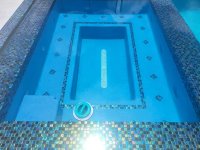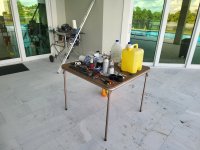- Oct 25, 2015
- 5,826
- Pool Size
- 28000
- Surface
- Plaster
- Chlorine
- Salt Water Generator
- SWG Type
- CircuPool RJ-60 Plus
03 June 2024: Starting up New Plaster. What a difference a day makes!
As predicted by @JoyfulNoise and other TFP experts pH rose abruptly last night.
pH 8.0
FC 2.5
CC 0.5
And brushing with filter pump running 24/7 is clearing her up nicely as predicted. Building a pool with TFP at my side has been fantastic!
Chris


As predicted by @JoyfulNoise and other TFP experts pH rose abruptly last night.
pH 8.0
FC 2.5
CC 0.5
And brushing with filter pump running 24/7 is clearing her up nicely as predicted. Building a pool with TFP at my side has been fantastic!
Chris














